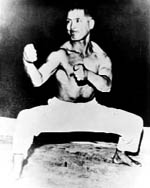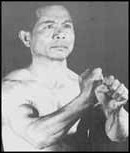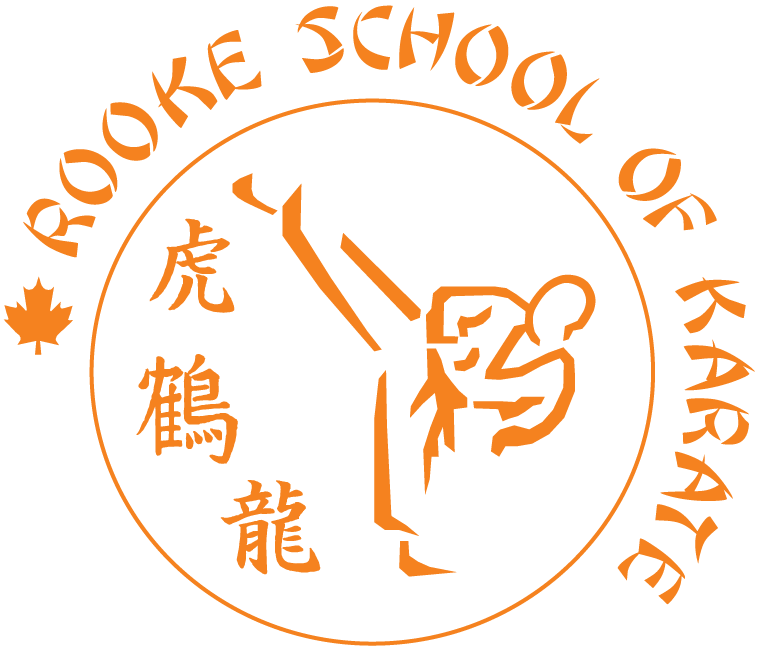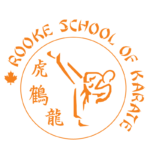History
History Of Our Styles
Uechi Ryu Karate-Do
The style of karate taught at this school is called Uechi-Ryu. It is derived from a form of Chinese martial arts (chuan-fa) with its headquarters on the island of Okinawa, Japan – the birthplace of modern karate.
Originally taught as Pangainoon (meaning half hard, half soft), the name was changed to Uechi Ryu to honour Kanbun Uechi (1877-1948) after his death. The word “Karate-do” means empty (kara), hand (te) and way of life (do). Thus, studying Uechi Ryu Karate-do means literally to follow the way of Uechi’s style of empty hand.
To print off a booklet with more information on Uechi Ryu history, dojo etiquette, black belt qualifications and more click here – Uechi-Ryu History.
Kanbun Uechi
Grand Master KanbunUechi, considered the founder of Uechi-Ryu Karate-Do, was responsible for lifting the veil of secrecy, bringing this art out of China and into Okinawa and Japan. He was born on May 5, 1877 in Isumi, a small village in northern Okinawa. At the age of 20 (in 1897), in order to avoid serving in the Japanese military, which at that time occupied Okinawa, Kanbun fled to China. There, in Fukien Province, he studied the art of Pangai-noon. Pangai-noon was taught in the Shoalin Temple in Southern China, and is derived from the interwoven movements of the tiger, crane and dragon. It is a specialized method of self-defense that concentrates on the use of the single-knuckle punch, spear-hand strike, pointed kick and circular block. His teacher was Shushiwa, a Buddist priest who had received his training in the Shoalin Temple. Master Uechi studied in Fukien for ten years and became a Master of Pangai-noon. He has the distinction of being one of the very few foreigners ever to teach chuanfa in China.
At the end of training, Master Uechi opened a school in Nanchon, a city in Fukien Province, where he taught for three years. During this time it is believed that one of his students became involved in a dispute and called upon his training to kill another person. Disheartened by this event, Master Uechi vowed never to teach again, closed his school and returned to his homeland in 1910.
Returning to Okinawa, he married and on June 26, 1911 his son Kanei was born. In April 1924 Kanbun left his family in Okinawa to seek employment and travelled to mainland Japan. He settled in Wakayama and secured employment in a textile mill. In April 1925, after many appeals from Ryuyu Tomoyose and other Okinawans for Kanbun to pass on his great knowledge and ability to future generations, Kanbun changed his mind and ended his fifteen year ban on teaching martial arts and opened his first school in Japan. Ryuyu Tomoyose officially became Kanbun Uechi’s first student followed by a number of other Okinawa’s including Seiryo Shinjo.
In 1927, Kanei Uechi travelled to Wakayama and joined his father and the dojo. Ten years later he received a Certificate of Instruction and Full Proficiency and opened his own dojo in Osaka. In 1941 he was promoted to Master level by his father. In 1942 Kanei returned to Okinawa (now with his own family) and began teaching Pangainoon in the yard of his home. Kanbun decided to return to Okinawa in 1946 and died on November 25, 1948 on Ie-jema Island where he and the Shinjo family had relocated to. The Shinjo family were the only ones present when Kanbun died.
In 1957 Kanei opened the Futenma dojo to the public. (The first North American student and Black Belt of UechiRyu was George Mattson.) Over the next few decades Kanei Uechi continued to be completely dedicated to the organizing and teaching of his system. Kanei Uechi died on February 21, 1991 at the age of 80.
In 2009, Rooke School of Karate became now a proud new member of the Uechi Ryu Karate Do Kenyukai Association of North America.
Kenyukai History
Seiryo Shinjo (June 10, 1908-March 5, 1976) entered Kanbun Uechi’s dojo in 1927. They became very good friends. His first son, Seiyu (July 10, 1929-Oct 23, 1981) became a student of Kanbun in 1939. Seiyu was extremely fortunate to learn from both Kanbun and Seiryo until Kanbun’s death. Seiryo had to stop his own karate training after the war due to a respiratory problem. Seiyu, however, after moving back to Okinawa (first on Ie-jima Island, then Naha and finally Kadena) continued his karate training with Kanei Uechi and opened his own dojo. He has been recognized by many, including Kanei Uechi himself, as being one of the strongest proponents for making Uechi Ryu karate a strong internationally recognized organization.
His first son, Kiyohide Shinjo, born Nov 3, 1951, assisted by his younger brother Narihiro (born in 1960), now continues this legacy with the Kenyukai organization he started in 1982 in honour of his father’s death that year. (“Ken” means fist, “yu” is part of the name of Sieyu and “kai” means group.) Thus Kenyukai stands for “Sieyu Shinjo’s strong fist group”.
Ryukyu Kobudo Hozonkai History
Kobudo, literally translated, means the “old martial way.” However, when we use the term kobudo we refer to weapons. More precisely, the weapons that Ryukyu Kobudo describes are the weapons used by the people of Okinawa in feudal times.
Rooke School of Karate is a proud member of the Ryukyu Kobudo Hozonkai (The Okinawan Association for the Preservation of Old Martial Ways). Similar to karate, there are many different styles of kobudo.
The style of kobudo practiced by our club descends from the Taira Shinken lineage passed down through Minowa Katsuhiko to Kinjo Masakazu and his sons Kinjo Satoshi and Kinjo Kenta.
Initially students study the sai and the bo. These two weapons form the core of our kobudo style. Once competency is established, the student will progress to other weapons while polishing their existing skills. In addition to the sai and bo, students have the opportunity to learn to use the tekko, nunchaku, tonfa, tinbe & rochin, kama, and eku.
Skills with each weapon are developed through the practice of kihon (basic techniques), hojo undo (supplementary exercises), kata (forms), and yakusoku kumite (pre-arranged sparring). The techniques with each weapon practiced are functional, providing insight into the history and purpose of each motion.
On Okinawa, it has been said that the practice of karate without kobudo is like riding a bicycle with one wheel.
Lineage

Sensei Steve Rooke
Rokudan – 6th Degree Black Belt
Student of Manuel Desa

Manuel Desa
8th Degree Black Belt
Student of Grande Master Kiyohide Shinjo

Kiyohide Shinjo
10th Degree Black Belt
Kenyukai Okinawa

Seiyu Shinjo
10th Degree Black Belt
Student of Father Seiryu Shinjo and Kanbun Uechi

Seiryu Shinjo
10th Degree Black Belt
Student of Kanbun Uechi

Kanei Uechi
10th Degree Black Belt
Student of Kanbun Uechi

Kanbun Uechi
10th Degree Black Belt
Founder of Uechi Ryu Karate-Do

Shushiwa
Teacher of Kanbun Uechi
Taught in Fuchow City, China – circa 1890

